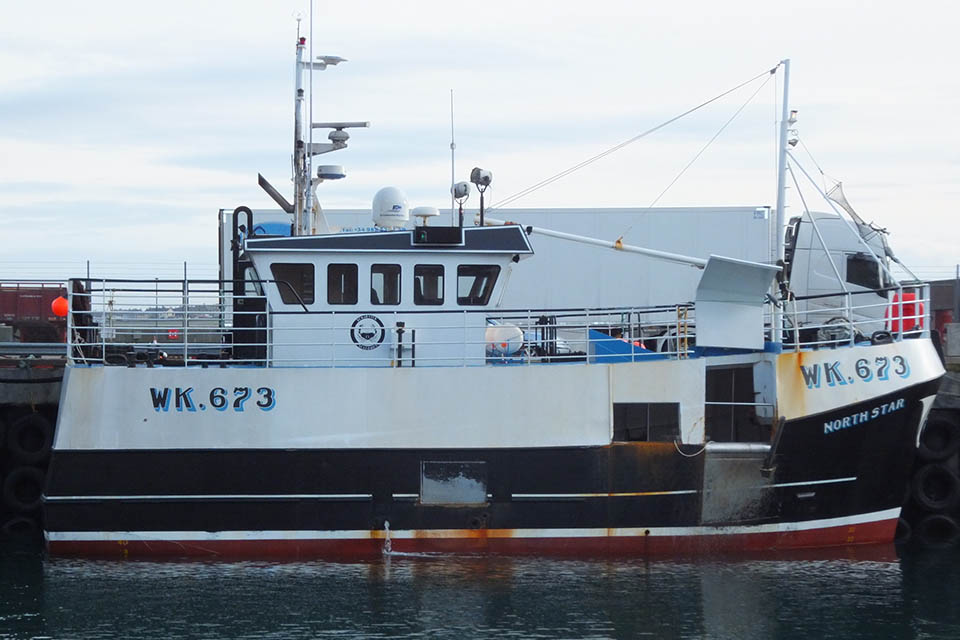Safety flyer to the fishing industry - North Star
Published 8 November 2018
1. Summary
Fatal man overboard from the creel fishing vessel North Star (WK 673) on 5 February 2018

2. Narrative
At about 1815 on 5 February 2018, a crewman from the 16.46m creel fishing vessel North Star was dragged overboard when his leg became entangled in the back rope as the crew were shooting creels in rough seas approximately 16 miles off the coast. The crew retrieved the fishing gear and recovered him back on board about 10 minutes later. The crewman was unconscious and unresponsive. The crew completed cardiopulmonary resuscitation for over an hour, but they were unable to revive him and the rough seas prevented the rescue helicopter from providing assistance.
The accident occurred because the crewman was working in an unsafe position with no physical barrier between him and the moving back rope. Although the alarm was quickly raised on board, there was no knife readily available for the crew to cut the crewman free, and the skipper was unable to stop the vessel in time to prevent the crewman from being dragged overboard.
The investigation identified that regular drills were not completed on board, the vessel’s risk controls did not reflect the operational practice on board, and some crew, including the deceased, had not completed some of the mandatory safety training courses.
North Star’s owner was new to fishing vessel ownership and was unaware of the applicable regulatory requirements and published industry best practice.
3. Safety lessons
-
Shooting creels manually is inherently hazardous as crew are often working in close proximity to running ropes, which present a risk of entanglement. While shooting operations must often be completed by hand, it is crucial that a safe system of work is developed, preferably one that effectively physically separates the crew from the ropes.
-
A sharp knife should be positioned such that it can be accessed readily. Had the crewman been carrying a knife, or if one had been readily available on the working deck, there might have been an opportunity for the crewman to be freed from the back rope before he was dragged overboard.
-
Once the crewman had entered the water, it would have been difficult, if not impossible, to free himself before drowning. However, had he been able to do so, the wearing of a PFD would have improved his chances of survival in the cold conditions.
-
Risk assessments are a useful way of ensuring that working practices take into consideration all identifiable hazards. However, they must reflect the operational practice on board and industry best practice. The crew should all be aware of the contents of the risk assessment for each operation, and comply with the applicable documented risk controls. Only then can the full value of a risk assessment be realized.
-
It is essential that owners and skippers are proactive in identifying the regulatory requirements and industry best practice applicable to their fishing operations, and that individual roles and responsibilities for implementing the vessel’s health and safety policy are clearly assigned.
Our accident investigation report is available at: https://www.gov.uk/maib-reports/man-overboard-from-creel-fishing-vessel-north-star-with-loss-of-1-life
For all general enquiries:
Marine Accident Investigation Branch
First Floor, Spring Place
105 Commercial Road
Southampton
SO15 1GH
Email iso@maib.gov.uk
Enquiries during office hours +44 (0)23 8039 5500

